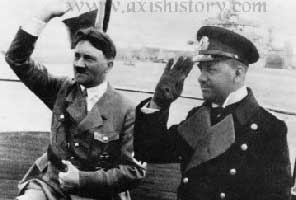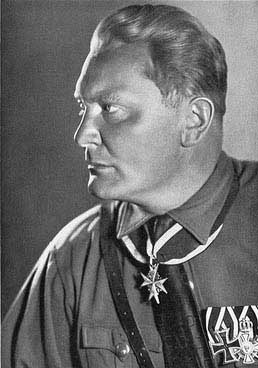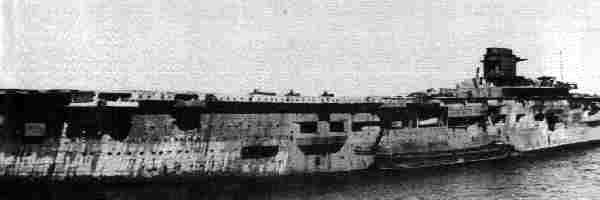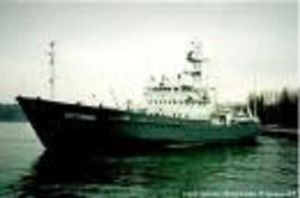German Aircraft Carrier Graf Zeppelin never to be commissioned
Introduction.
The German Kreigsmarine never really embraced the use of aircraft carriers in WW2. Hitler showed little interest in this type of Naval vessel and its operation. The chief of the Luftwaffe, Herman Goering was always jealous of his command over all forms of aircraft, and did all in his considerable power to stymie Admiral Reader's plan to build up to four aircraft carriers.
1935.
In 1935, Hitler announced a plan for the Navy to acquire aircraft carriers. Two keels were laid down in 1936, and in 1938, Grand Admiral Erich Raeder produced his Plan Z, a grand scheme to build four Carriers and complete them by 1945, but in 1939 this was scaled back to just two.
Hitler and Raeder.
Policy of naming ships in German Navy.
It was Naval policy to not actually name a ship until it was launched. The first laid down Carrier was designated Aircraft Carrier A, to be named Graf Zeppelin at its launch in 1938.
The second, Aircraft Carrier B was never launched.

Hitler and Raeder
1941.
Come May in 1941, Raeder informed Hitler that Graf Zeppelin, about 85% completed, would be finally finished the next year. But Herman Goering was no help, he told both Hitler and Raeder he was unable to supply the Navy with aircraft for Graf Zeppelin until the end of 1944.

Luftwaffe chief Herman Goering
His delaying tactics worked, Aircraft Carrier B was abandoned, and broken up.
By 1943 Adolf Hitler was not too interested in anything Navy, and the frustrated Raeder asked to be relieved, he was accommodated by Hitler, and Karl Donitz, the Submarine chief took charge. He was not at all interested in seeing an aircraft carrier gaining more focus than his beloved U-Boat arm, and all work stopped on Graf Zeppelin, notwithstanding she was 95% completed. The ship had her armament stripped out of her, and sent off to Norway for coastal battery use.
Scuttled.
At war's end in 1945, to ensure this ship did not fall into Russian hands, Graf Zeppelin was scuttled in shallow water at Stettin in Poland, on April 25th. 1945.
Allied Tripartite Commission.
Under the terms of the Allied Tripartite Commission, Graf Zeppelin should have been destroyed or scuttled in deep water by August 15th. 1946. But not so! the Russians decided to repair the Carrier, she was refloated in March 1946. No doubt loaded with loot from the conquered Poland.

Last photograph of Graf Zeppelin towed from Swinocijscie Poland to Leningrad. April 17. 1947.
No doubt loaded with loot from the conquered Poland.
Soviet Archives Opened.
It was unsure post WW2 what had been the fate of Graf Zeppelin until the Soviet archives were opened up.
It appears the Carrier was towed from Poland to Leningrad, unloaded and designated PO-101 ( ie. floating base Number 101 ) the Russians wanted to repair the ship at Leningrad as all the repair facilities at Stettin had been destroyed. But this did not happen, and again Graf Zeppelin was towed off to the Polish coast.
Final demise of Graf Zeppelin.
On the Polish coast on August 16th. 1947, the ill fated Carrier was used as target practice for both Soviet aircraft and Naval ships. After taking 24 bombs and projectiles the ship was still afloat, finally two torpedoes did the job, and the carrier sank.
The actual position of her sinking was unknown for many years, but in 2006, a Polish Oil Company ship Petrobaltic found a 265 metre long wreck close to the port of Leba. On July 27th. 2006, the Polish Navy survey ship ORP Arctowski confirmed the find was indeed the wreck of Graf Zeppelin, sitting at 264 feet below the surface.
Crew from Polish Survey vessel ORP Arctowski identified the wreck of Graf Zeppelin July 27th. 2006.

Polish Survey vessel ORP Arctowski
Conclusion.
The grand plan of Grand Admiral Erich Raeder never ever came to fruition, Germany did not produce a completed Aircraft Carrier in WW2.
A proud ship, never destined to be commissioned, post WW2, was merely used as target practice by a previous enemy.
A sad end for such a ship, once part of a scheme for the German Navy to get its wings.



